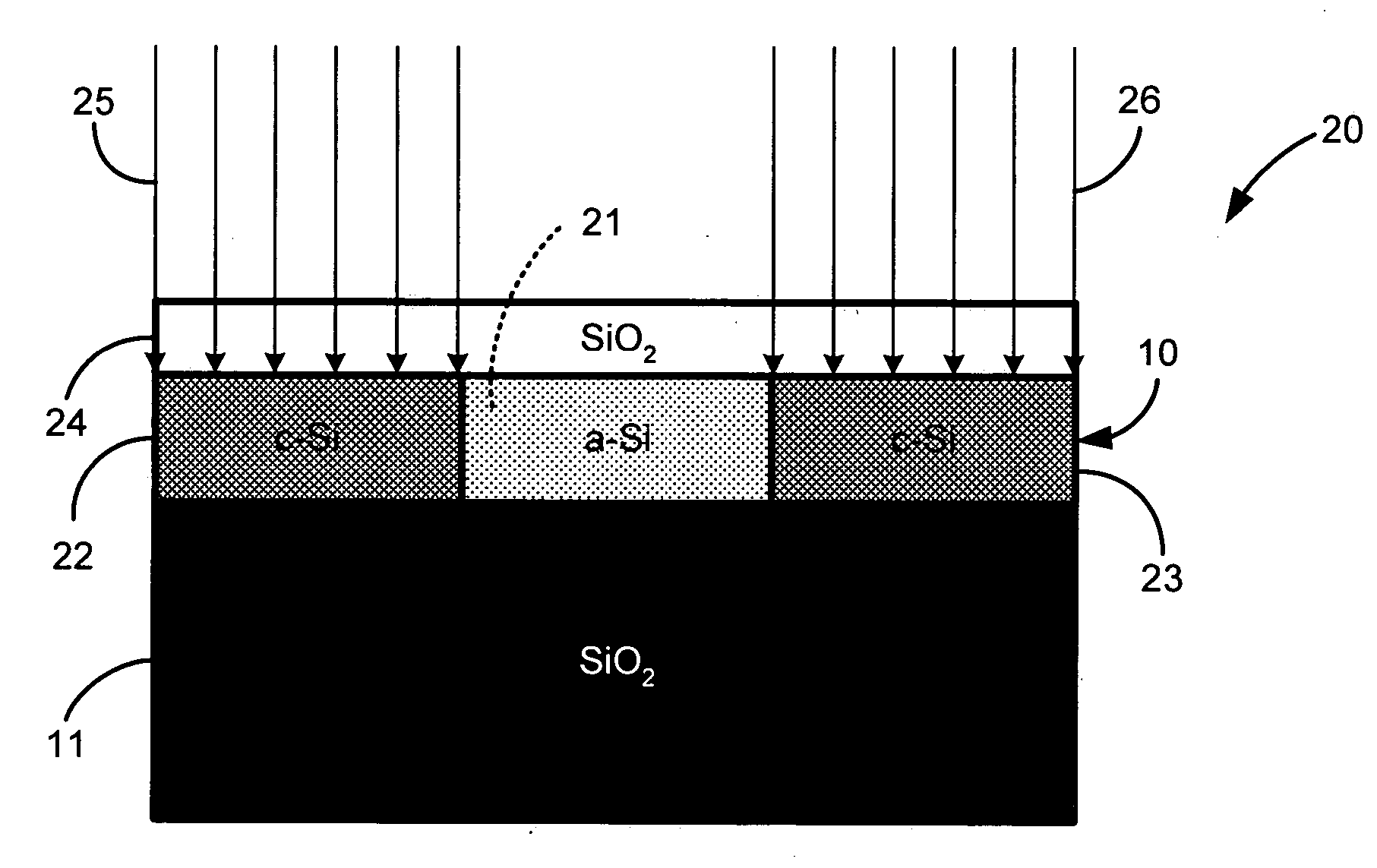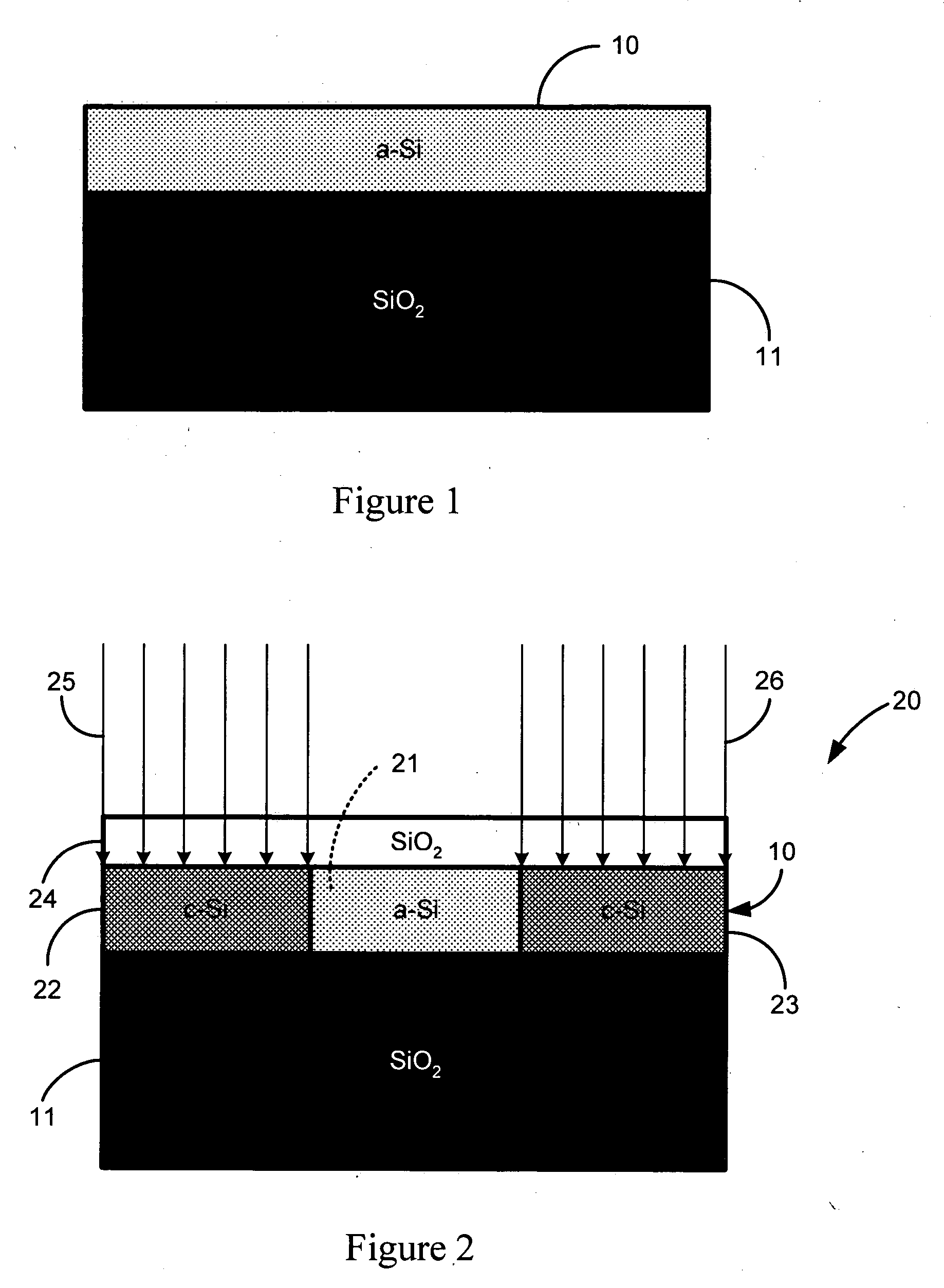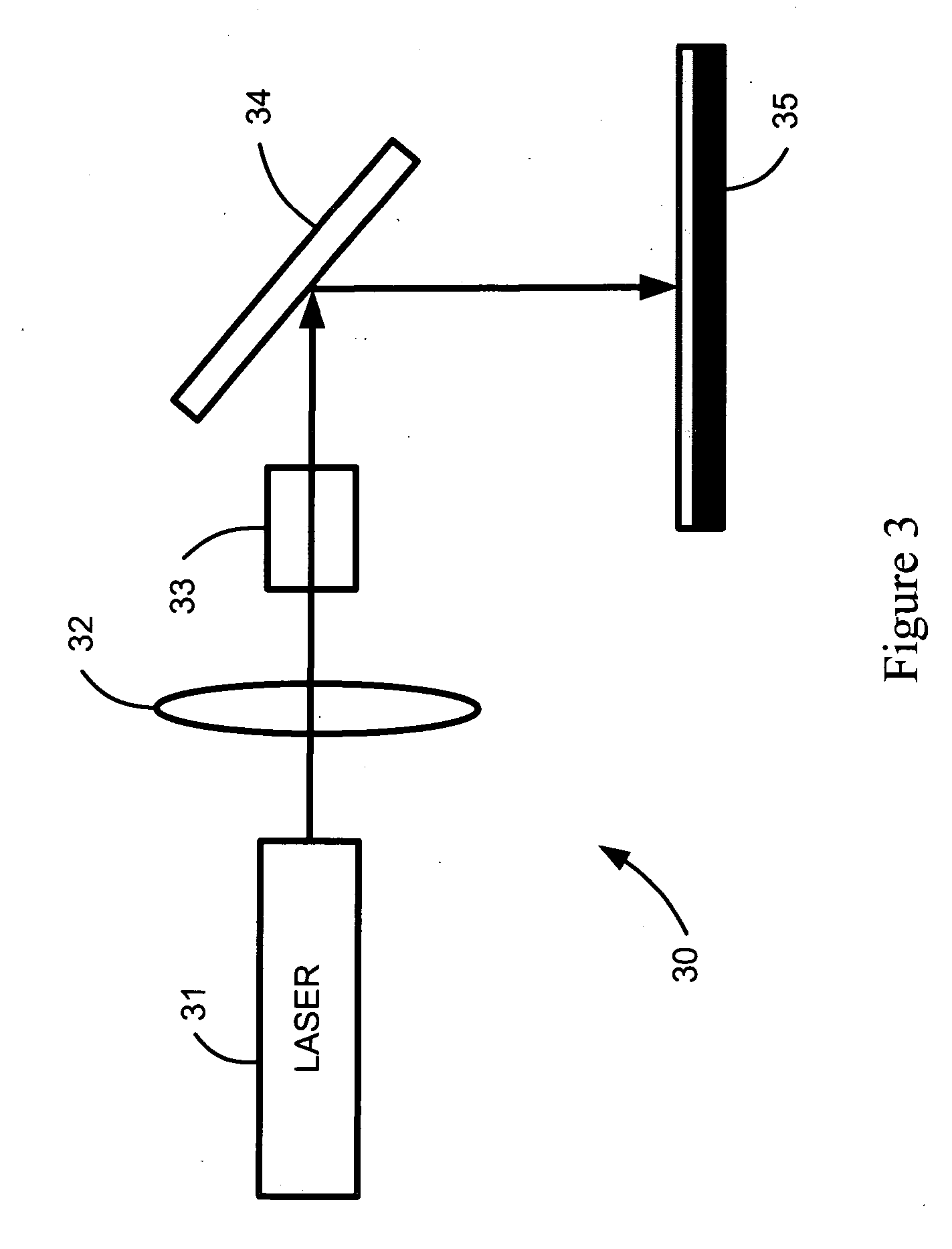Direct-patterned optical waveguides on amorphous silicon films
a technology of amorphous silicon film and optical waveguide, applied in the direction of optical waveguide light guide, instruments, optics, etc., can solve the problem of relatively large losses and achieve the effect of reducing the refractive index of the selected region
- Summary
- Abstract
- Description
- Claims
- Application Information
AI Technical Summary
Benefits of technology
Problems solved by technology
Method used
Image
Examples
Embodiment Construction
[0020] The present invention is generally directed to an optical waveguide architecture and fabrication method thereof, having an amorphous silicon (a-Si) core region bounded by polycrystalline silicon (p-Si) cladding regions for operation over the spectral range spanning the communication wavelength bands in the range from about 1.2 to about 1.6 microns. In this spectral region, the optical refractive index of a-Si is up to about 20% greater than p-Si, with the amorphous phase having the larger index, n.sub.a.apprxeq.4, and the crystalline phase the lower refractive index n.sub.c.apprxeq.3.2. Such an index differential enables waveguide operation, i.e. optical signal propagation through the higher refractive index a-Si core as bounded by the lower refractive index p-Si cladding.
[0021] FIG. 2, shows an exemplary embodiment of the waveguide architecture of the present invention, generally indicated at 20, and having an intermediate silicon (Si) layer 10 formed (such as by thin film d...
PUM
 Login to View More
Login to View More Abstract
Description
Claims
Application Information
 Login to View More
Login to View More - R&D
- Intellectual Property
- Life Sciences
- Materials
- Tech Scout
- Unparalleled Data Quality
- Higher Quality Content
- 60% Fewer Hallucinations
Browse by: Latest US Patents, China's latest patents, Technical Efficacy Thesaurus, Application Domain, Technology Topic, Popular Technical Reports.
© 2025 PatSnap. All rights reserved.Legal|Privacy policy|Modern Slavery Act Transparency Statement|Sitemap|About US| Contact US: help@patsnap.com



